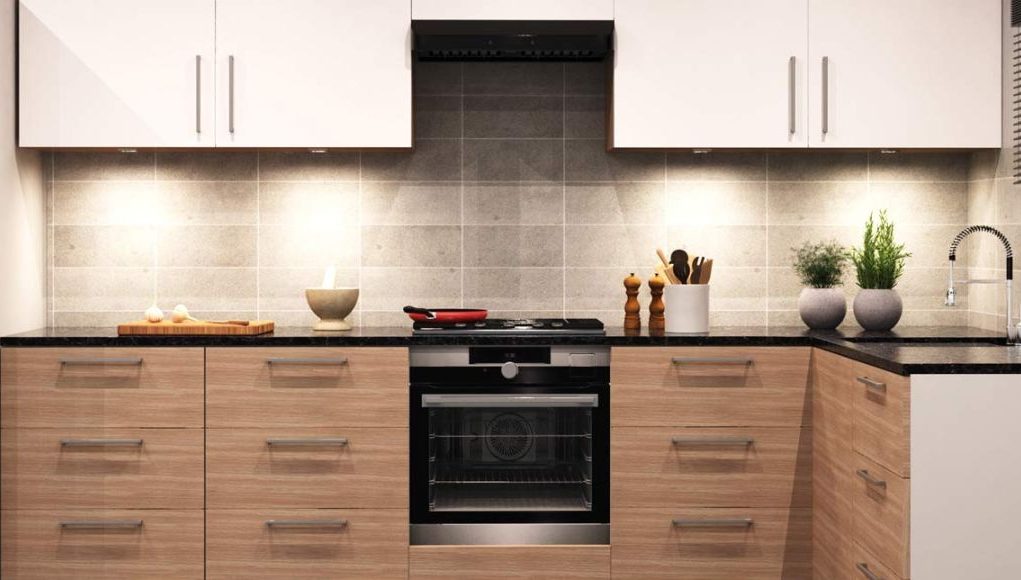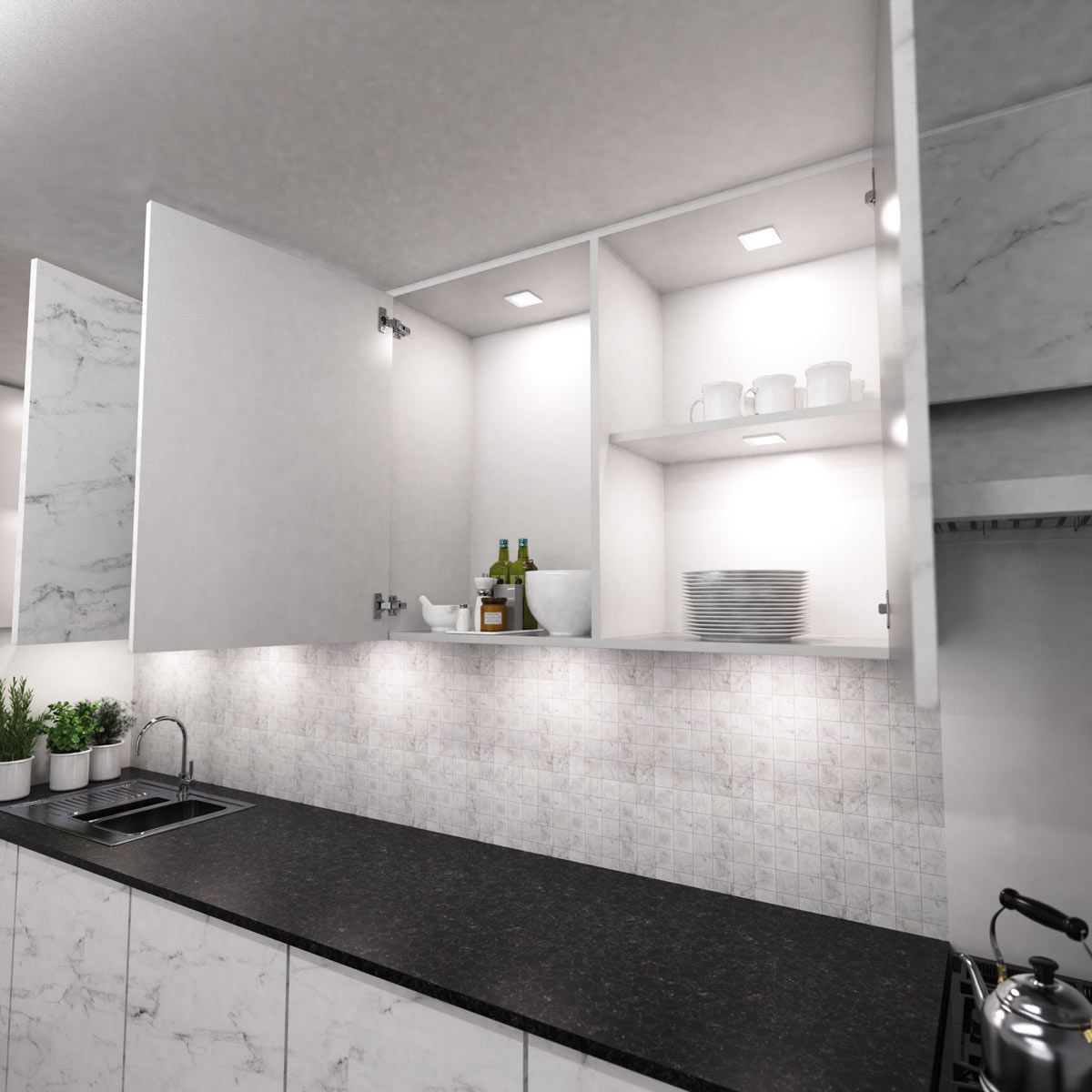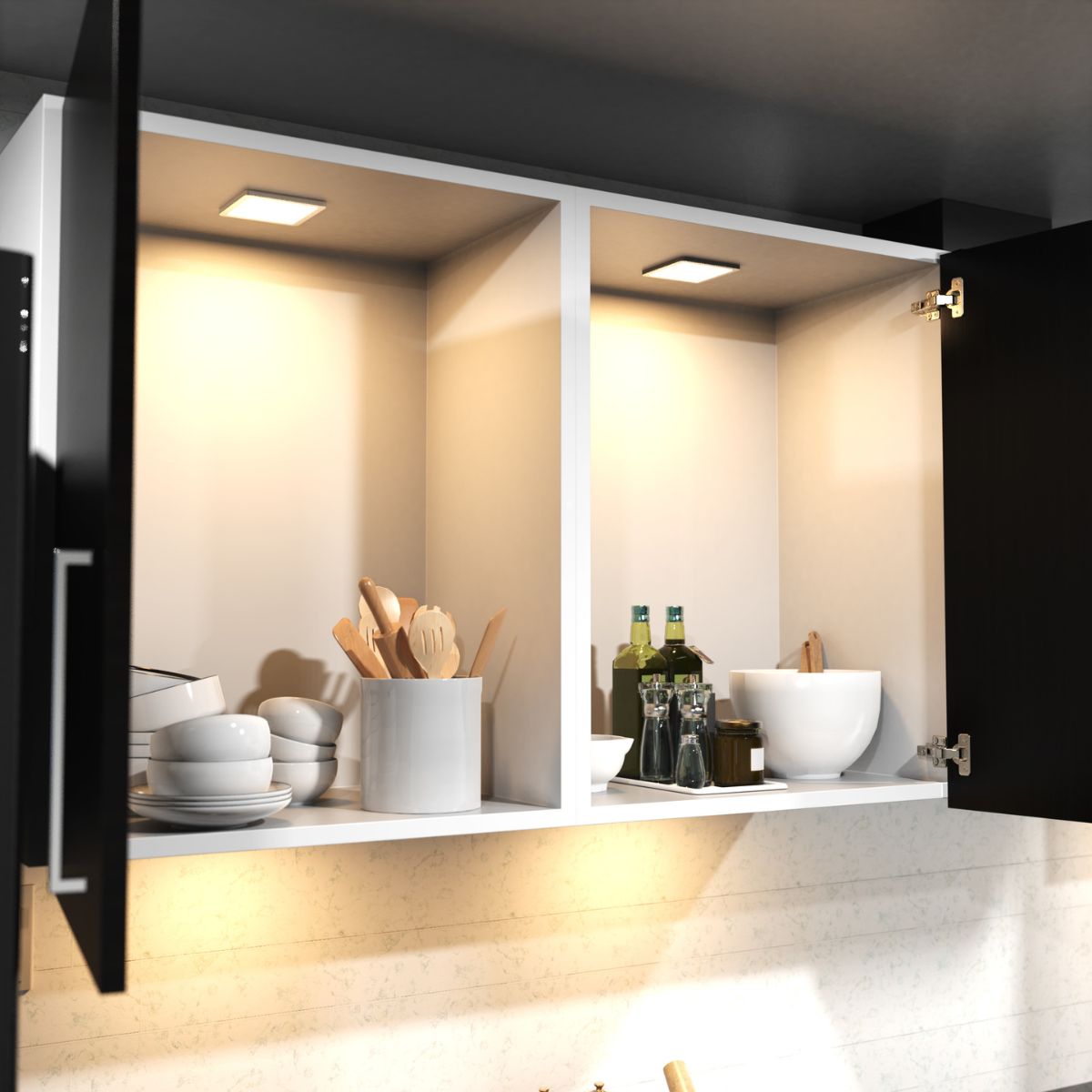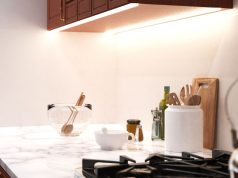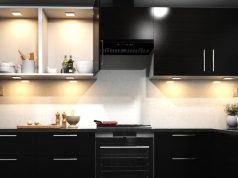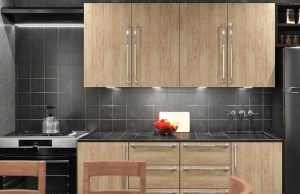Just because you have a small kitchen doesn’t mean you should just leave it looking bare, flat, and unloved.
In fact, designing a small kitchen can actually feel like a puzzle since every inch matters, and every design choice counts. You have a small space after all.
You’ll hear people talk about clever cabinetry or multi-functional furniture for maximising space. But one of the most overlooked transformative tools for a small kitchen?
Lighting.
And that’s not us being biased. In compact kitchens, the right lighting doesn’t just help you see what you’re doing; it changes how the space feels and the way it’s perceived.
A well-lit kitchen can appear larger, brighter, and far more inviting. The wrong lighting, however, can make it feel cramped, shadowy, or even clinical.
That’s where smart lighting design comes in. It creates the illusion of depth, highlights key areas, and enhances your kitchen’s personality, all while making daily tasks easier and safer. And that’s what we’re going to go through in this post.
The goal? To make your small kitchen feel anything but small by balancing functionality with warmth and style.
Ready? Let’s glow.
The Power of Layered Lighting
One of the most effective ways to transform any space (but in this particular case, a small kitchen) is through layered lighting.
What’s layered lighting? It’s combining different light sources to create depth, balance, and atmosphere.
Think of lighting as having three layers:
- Ambient lighting provides general illumination. It’s the base layer that ensures the whole space is bright and evenly lit.
- Task lighting targets functional zones, such as worktops, sinks, and cooking areas, where you need focused light for precision.
- Accent lighting adds drama and personality by highlighting textures, decor, or architectural features.
Layered lighting integrates all three layers to create a space that’s balanced and functional. In a compact kitchen, these layers work together to avoid harsh contrasts or dark corners. By layering light thoughtfully, you add visual depth. It’s a clever way to make a small kitchen feel bigger and more balanced.
Bright Ideas for Compact Spaces
When every square metre matters (and especially when you do not have much of it), your lighting choices need to be efficient, discreet, and aesthetically pleasing.
Here are some of the best small kitchen lighting ideas that deliver maximum impact without taking up precious space.
Use Slimline LED Strips for a Seamless Look
LED strip lights are a small kitchen’s secret weapon when it comes to lighting.
You can install them beneath cabinets, along shelves, or even under counters to provide bright, shadow-free illumination exactly where you need it most. Because they’re low-profile and easy to hide, LED strips create a clean, streamlined aesthetic that doesn’t visually clutter the space.
Most also come with adhesive backing, making installation quick and simple.
LED strips are also incredibly energy-efficient and available in various brightness levels and colour temperatures. Opt for warm white to soften the look in cosy kitchens, or cool white for a crisp, modern feel and for task lighting.
If you’re looking for a more professional finish, integrating LED strips within aluminium profiles is always a welcome choice. They protect the LEDs from external impacts, diffuse light evenly to eliminate harsh glare, and even serve as a heatsink that prolongs the life of your strips.
The result? A polished finish that looks built-in rather than added on.
Choose Recessed or Flush Ceiling Lights
When ceiling height is limited, you don’t go with large pendant lights and grand chandeliers.
No. Recessed downlights or flush-mounted fittings are ideal. They sit neatly against or within the ceiling, providing generous general illumination without intruding into the visual space.
Consider using tiltable downlights that can be angled to wash light down cabinet fronts or onto splashbacks. This not only enhances functionality but adds a layer of subtle visual texture that can make the kitchen appear deeper.
Illuminate Vertical Spaces
Lighting vertical surfaces draws the eye upward, helping the room feel taller and airier. It’s an effective optical illusion of sorts, and it works.
A few clever ways to do this include:
- Wall washers that softly bathe walls in light, creating the illusion of expanded width.
- Uplighting above wall cabinets, which bounces light off the ceiling for an ambient glow that lifts the whole room.
- Illuminated glass shelving, perfect for displaying glassware or ceramics while adding depth and sparkle.
By brightening your vertical lines, you emphasise height rather than footprint.
Add Accent Lighting for Personality
We said this already: Just because your kitchen is small doesn’t mean it has to be plain.
Accent lighting adds character and mood to your kitchen, turning a purely functional space into one that feels personalised and welcoming.
Try adding plinth or toe-kick lights along the base of your cabinets. These small LEDs create a floating effect, making your cabinetry appear lighter and your floor space larger. Backlighting behind splashbacks or shelving adds a subtle glow that hints at luxury, while a strip of light along open shelving highlights favourite pieces without cluttering surfaces.
In compact kitchens, a little glow goes a long way. Watch as your kitchen turns from normal to sophisticated by just adding a few accent lights.
Colour Temperature & Brightness: Creating the Illusion of Space
The colour temperature and brightness of your lighting have a huge impact on how spacious your kitchen feels. Cooler light (higher on the Kelvin scale) tends to feel cleaner and more expansive, while warmer tones add comfort and intimacy.
Although you also have to take into account the design style of your kitchen. Modern kitchens tend to do well with cooler light, while traditional kitchens with wood accents work great with warmer light. The trick here is to mix them strategically according to function.
Here’s a quick reference guide:
- Warm White (2700K-3000K): Cosy, soft light ideal for dining corners or breakfast nooks.
- Natural White (3500K-4000K): Balanced and neutral, great for everyday use.
- Cool White (4000K-6000K): Crisp and bright, perfect for food prep, cooking, and cleaning zones.
TIP:
Keep the colour temperature consistent within each visual zone to avoid jarring transitions. Mismatched tones, such as a warm pendant over a cool-lit countertop, can make a small kitchen feel disjointed.
Brightness also matters. Using dimmable LEDs gives you the flexibility to adjust the ambience from bright and energising during the day to soft and atmospheric at night. Aim for around 300 to 400 lumens per square metre for general lighting, and a 700 to 800 lumens per square metre for task lighting.
Maximising Natural Light with Artificial Support
A window in the kitchen is a must. Natural light is every small kitchen’s best friend, after all… if you can maximise it well enough. Avoid blocking your windows with bulky blinds or dark frames. Instead, use sheer fabrics or frosted glass for privacy that still allows sunlight through.
You can maximise your kitchen’s natural light by embracing reflective surfaces: glossy cabinets, glass splashbacks, and light-coloured countertops bounce light around the room. Remember that even with a sunny window, the light rarely reaches every corner.
That’s where artificial lighting can step in to complement and enhance daylight. Use LED strips or slimline wall fittings to fill shadowy areas where daylight doesn’t reach, such as under cabinets, in corners, or inside deep cupboards.
Nothing beats natural light. Make the most of it during the day, and as dusk falls, let your LED lighting scheme take over seamlessly, maintaining a sense of brightness and openness well into the evening.
Lighting Tricks to Make Kitchens Feel Bigger
A few clever tricks can make your small kitchen feel noticeably larger and more functional. Here are some lighting tricks to create an illusion of a bigger space:
Use continuous lighting lines: Running LED strips in unbroken lines beneath wall cabinets or along the plinth visually stretches the room’s length. The eye follows the light, making the space appear elongated.
Add lights inside cupboards and drawers: Built-in micro LEDs that activate when opened make storage feel modern, convenient, and far less claustrophobic. No more rummaging in the dark!
Bounce light off surfaces: Uplighting (onto ceilings or walls) is great because it creates a soft, diffused glow that opens up the space.
Choose glass or clear light fittings: Transparent materials allow light to pass freely, reducing visual heaviness. Being able to see through your fittings also creates a sense of space, making it feel more spacious compared to when you can’t see what’s behind your lights.
Add dimmers for flexibility: Adjustable brightness lets you shift from bright and functional during meal prep to calm and cosy for evening dining. A subtle touch that makes the space feel dynamic and responsive.
Try these tricks and watch your small kitchen virtually expand in front of your eyes.
Common Small Kitchen Lighting Mistakes
Even a beautifully designed kitchen can fall flat without the right lighting strategy. Here are some common pitfalls you can avoid to ensure your small kitchen does not get limited by its space.
1. Relying on a single overhead light
If this is you, you have some serious revamping of your lights to do.
A single ceiling fixture creates shadows and flatness, leaving corners dim. Layered lighting ensures brightness and dimension throughout.
2. Ignoring under-cabinet or vertical lighting
Worktops without task lighting are frustrating to use, not to mention a safety hazard, especially when chopping meat and vegetables.
Dark cabinet fronts can also make the space feel closed in. Adding LEDs underneath and above cabinets instantly improves how you perceive the space.
3. Mixing mismatched colour temperatures
Combining natural and cool tones can make your kitchen look disjointed. Stick to one colour temperature for general lighting to ensure harmony.
4. Overusing bright, cold light
While cool white is essential for good task lighting and can make a room appear larger, too much of it can feel harsh and clinical. Soften your lights with dimmers or warmer accent lighting for balance.
5. Neglecting lighting controls
A simple dimmer switch or smart control adds flexibility and ambience, which is especially valuable in smaller spaces that serve multiple purposes.
Avoiding these mistakes not only lifts the visual appeal of your kitchen but also ensures it’s a joy to use day and night. At least now you won’t feel claustrophobic every time you do your meal prep.
Small Space, Big Impact
Small kitchens are undeniably a design challenge, but they also offer the opportunity to make every detail count. And a lot of times, it’s not getting a new cabinetry or cooker that levels up your kitchen’s visual appeal. What you need is better lighting.
By layering ambient, task, and accent lighting, choosing fixtures that save space, and paying attention to colour temperature and placement, you can create a kitchen that feels brighter, larger, and beautifully balanced.
A well-lit kitchen doesn’t just look bigger. It FEELS bigger. With the right lighting, even the smallest kitchen can shine with warmth, depth, and style.


